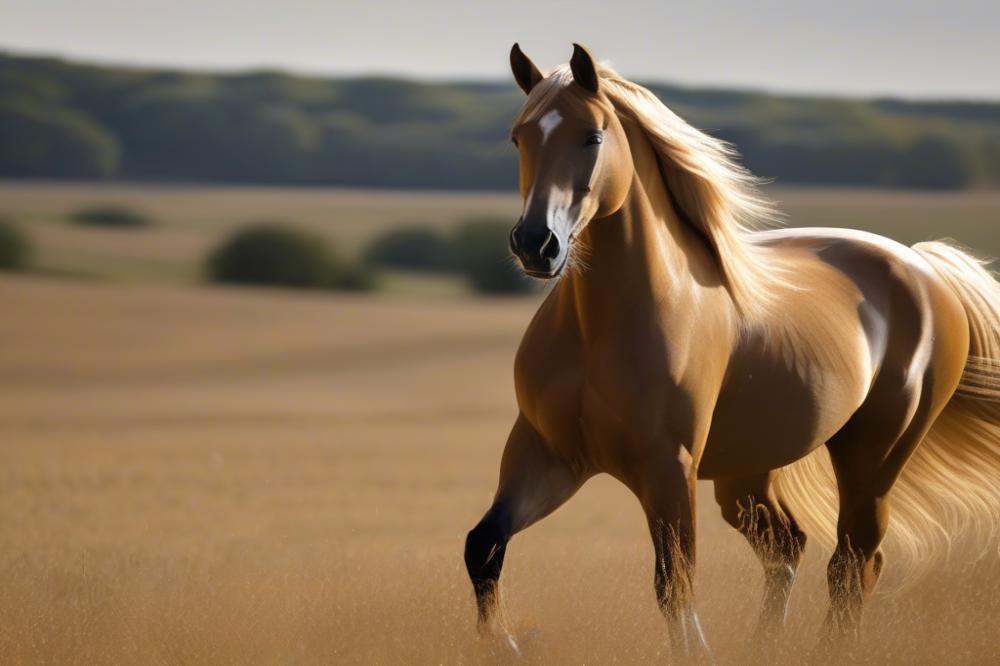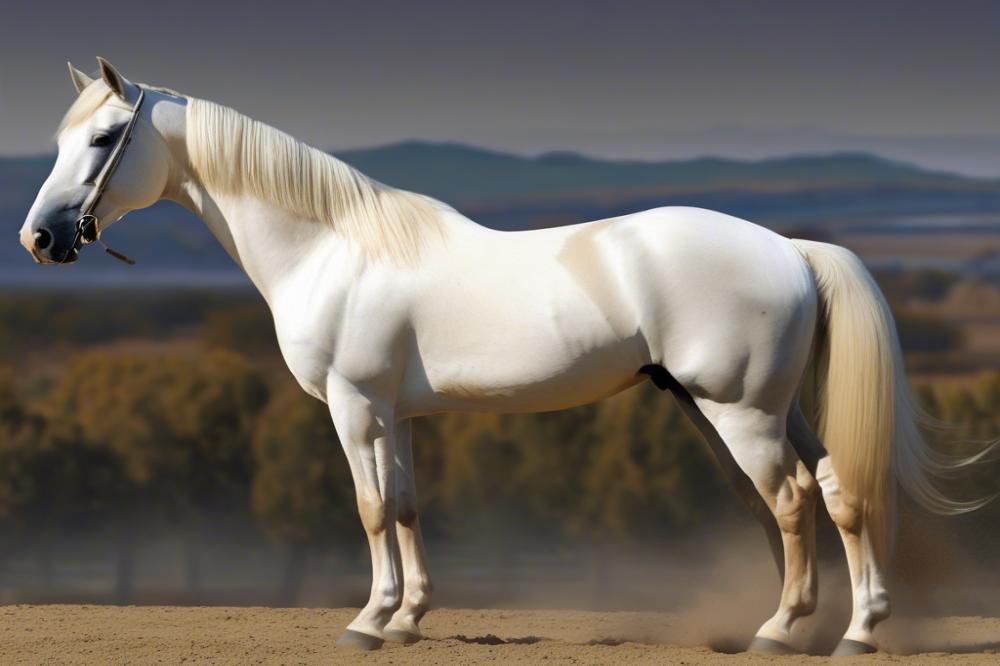Overview of the Akhal-Teke Horse Breed
The Akhal-Teke horse is nothing short of fascinating. Originating from Turkmenistan, this breed is often celebrated for its shimmering coat that catches the sunlight and dazzles anyone who lays eyes on it. Picture a horse gliding across the steppes, its golden hue glinting like a treasure—this is the Akhal-Teke. Its sleek form isn’t just about looks; it has roots deep in horse breeding history, tracing back over 3,000 years. These horses were once treasured by nomadic tribes for their speed and endurance, becoming invaluable companions during long treks across harsh landscapes.
Importance of Genetics in Understanding Breed Development
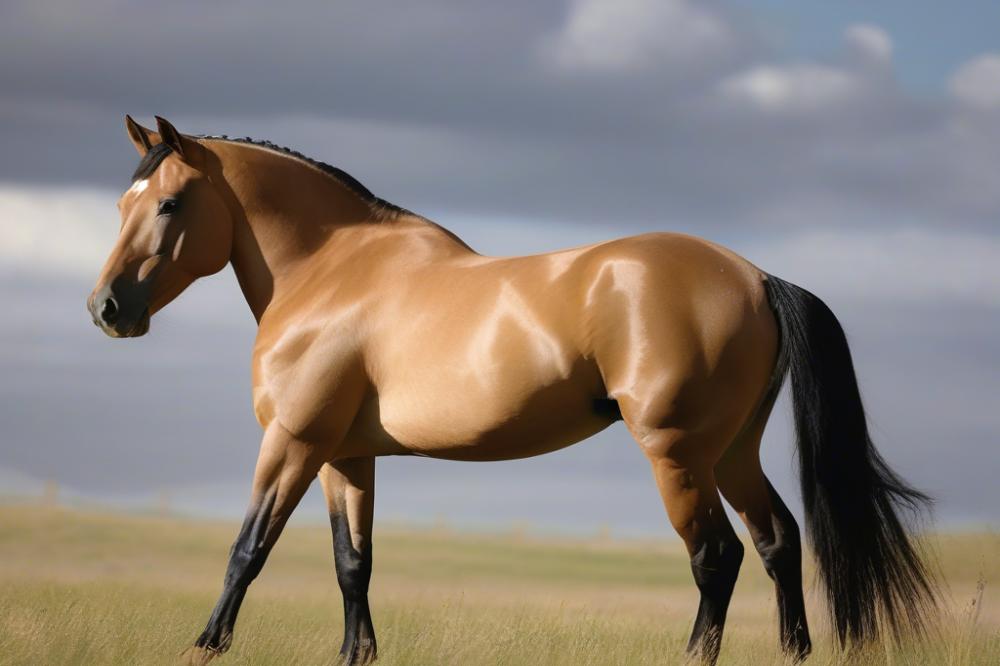
When exploring the Akhal-Teke, it’s essential to consider genetics. Like a family tree that reveals hidden talents, genetic make-up helps us understand how the breed evolved. Different traits, such as speed or resilience, come into play. Horse care has evolved alongside our understanding of equine genetics, providing insights that help breeders select the best pairings. This knowledge not only influences the physical characteristics of horses but also determines their temperament and abilities. If you’ve ever wondered about the difference between Arabian horse and Thoroughbred, genetic factors contribute to those distinctions, too. Each breed carries a unique story written in its genes.
Objectives of the Article
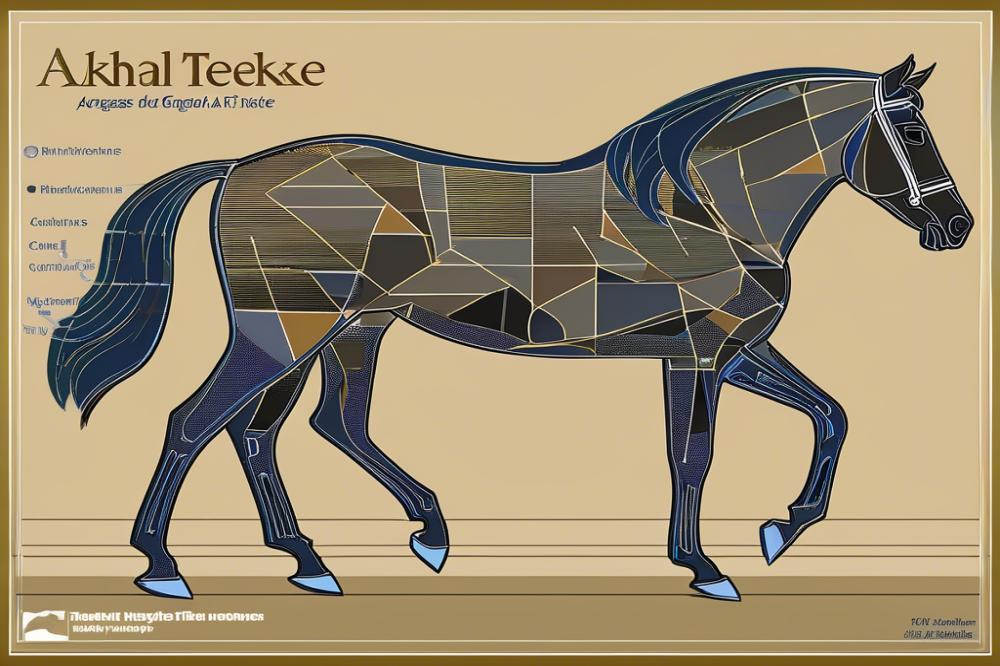
The aim of this article is pretty straightforward. We want to peel back the layers of the Akhal-Teke breed and shine a light on its lineage and genetics. By exploring the past—the stories embedded in their lineage—we can better appreciate the qualities these remarkable horses bring to the table. Whether you’re a seasoned horse enthusiast or someone just dabbling in the world of horse breeding, we aim to serve as a handy breeding guide. Through this journey, we hope to share insights that celebrate not just the Akhal-Teke itself but all that it represents in terms of history, culture, and perseverance.
So, sit back, grab a cup of your favorite drink, and join us as we gallop through the world of Akhal-Teke horses, with a nod to that striking blood bay horse color that some of them boast. Who knows? You might just find your next passion project waiting around the corner!
History of the Akhal-Teke Horse
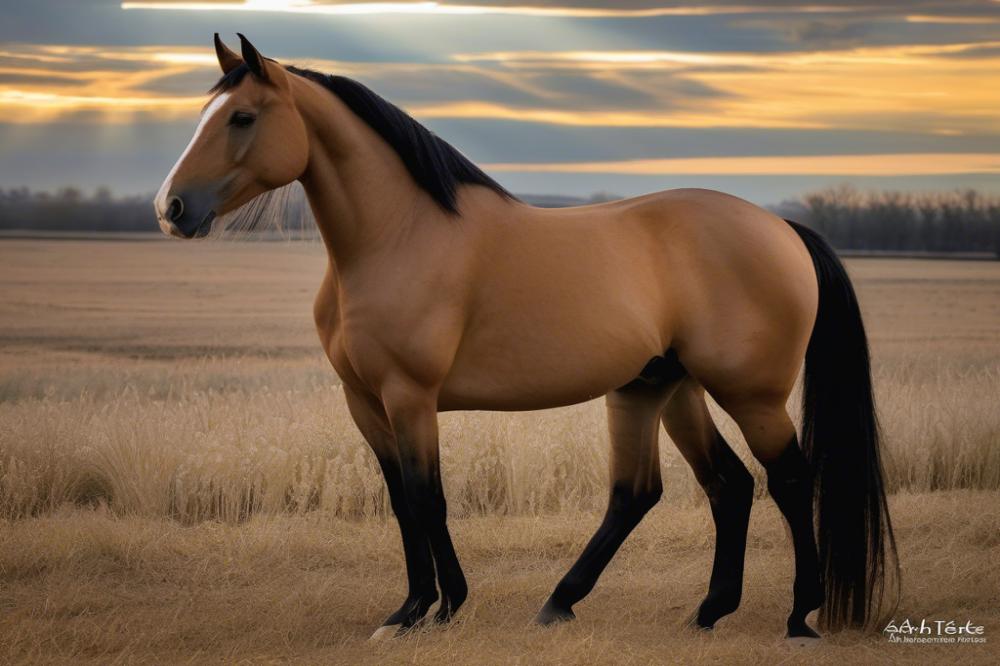
Origins in Central Asia
The Akhal-Teke horse traces its roots back to the vast steppes of Central Asia. This stunning breed originated thousands of years ago, likely in the region now known as Turkmenistan. It is said that these horses were developed by the people living near the Akhal Oasis. Over the centuries, they became famous for their speed and endurance. With a slender frame and a shimmering coat, they are hard to miss. Their unique genetics played a crucial role in their evolution. Farmers and herders raised them for their beauty and utility. The breed has formed deep connections with the land and its people through time.
Influence of the Silk Road
The Silk Road did not just carry silk and spices; it transported horses too! As merchants traveled along the ancient trade routes, they began to admire the Akhal-Teke. Traders valued them for their resilience and stamina. They mingled with other breeds during this time, enhancing the horse’s equine genetics. This blending of lineages led to even better performance in various activities. Today, the influence of this ancient trade network can still be seen in the breed. Many folks still speak of the Akhal-Teke as a symbol of grace and power. Their history intertwines with tales of adventure and commerce.
Cultural Significance in Turkmenistan
In Turkmenistan, the Akhal-Teke horse is celebrated like royalty. These magnificent creatures are more than just animals; they represent a way of life. Horse care in this region is an art. Every owner takes pride in grooming and training their Akhal-Tekes. Festivals dedicated to this breed highlight its importance to the culture. People hold horse races and competitions, showcasing their beauty and athleticism. Families pass down knowledge about horse breeding through generations. The Akhal-Teke is a living legend, held in the hearts of the Turkmen people. Its legacy continues to thrive, making it a true national treasure.
Physical Characteristics and Traits
Unique Appearance and Conformation
Akhal-Teke horses stand out in every crowd. With a slim, athletic frame, they exude grace and strength. Their body is often described as long and lean, showcasing a build that allows them to excel in various equine disciplines. Strong legs support their balanced posture, while a refined neck adds to their elegance. Have you ever heard the saying, “Beauty is in the eye of the beholder”? Well, when it comes to Akhal-Tekes, it’s hard to argue against their breathtaking looks.
Their heads are finely shaped, giving them a noble expression. Many folks admire their large, expressive eyes. These features also serve a purpose; they enhance their field of vision while galloping. Breeders pay close attention to these traits in their breeding guide, as conformation often plays a significant role in a horse’s abilities.
Coat Colors and Their Genetic Implications
Color is another thrilling aspect of the Akhal-Teke breed. Horses display a range of hues, including gold, silver, and bay. It’s fascinating to note that their shiny coats often reflect light in a way that makes them look almost metallic. This isn’t just a random coincidence; it relates to their genetic makeup and equine genetics.
Genetic combinations create an array of coat colors, each attached to a specific gene. Understanding these colors can help horse breeders make suitable choices when selecting mating pairs. Coat color may seem trivial, but it can have a rippling effect on breeding practices. In the world of horse care, breeders often find themselves captivated by how these colors might influence future generations.
Performance Traits Related to Genetics
Performance abilities often reflect a horse’s lineage. Akhal-Tekes have historical ties to endurance and agility, celebrated in races and other competitions. Thanks to their smart thinking and athletic prowess, they thrive in challenging environments. Many trainers insist that a horse’s lineage determines its performance qualities. Experience with this breed shows that genetics can offer insights into temperament as well.
When developing an approach to horse breeding, it’s essential to think about physical traits and potential skills. The Akhal-Teke’s resilience and quick learning abilities make them popular among riders. Their spirit can brighten up any training session, making them a joy to work with.
Horse enthusiasts often share stories of their Akhal-Tekes, showcasing the strong bond between horse and rider. These conversations highlight how every horse is shaped by both genetics and the care they receive along the way. In the end, the connection is what truly brings out the best in these amazing creatures.
Understanding Akhal-Teke Horse Genetics
Basic Principles of Equine Genetics
Genetics is like a recipe book for horses. Every horse inherits traits from its parents, much like how children receive characteristics from their moms and dads. Genes are the building blocks of these traits. They can determine everything from a horse’s coat color to its ability to win races. In equine breeding, understanding these genes helps breeders make smart choices.
Think of it this way: if you want a horse that’s fast, you’ll want to look at the family tree. If the parents were speedy, there’s a good chance the offspring will be too. Traits don’t always show up, though. Some skip generations, much like a child’s penchant for singing might not surface until grandpa steps in!
Genetic Diversity Within the Breed
The Akhal-Teke breed boasts a rich history, leading to some interesting genetic variations. With a small gene pool, keeping diversity is a challenge. A breed that lacks genetic diversity might face health issues, much like humans can suffer from certain genetic disorders. Breeders actively seek to mix things up to maintain health and vitality in the breed.
More variety can lead to stronger horses. Imagine a dense forest where all the trees are the same; a disease could wipe them all out. But a mixture of different types of trees increases survival chances. In horse care, this idea becomes vital. Breeders must tread carefully to preserve the wonderful qualities of this ancient breed while also welcoming fresh genes.
Key Genetic Markers and Their Significance
When discussing equine genetics, you can’t overlook specific genetic markers. These markers act like flags on a treasure map. They indicate traits like speed, endurance, and even temperament. Some genes are associated with shiny coats and strong bones, critical for an athlete.
Identifying these markers allows breeders to create a roadmap. They can make informed decisions about horse breeding, choosing pairings that could produce your next top competitor. It’s a bit like matchmaking, but for horses! Horses with favorable genetic markers lead to better performance.
Overall, understanding genetics is crucial for anyone involved with Akhal-Teke horses. The right mix can result in horses that are not just stunning to look at, but also incredible athletes. There’s a beauty in this science, as it combines the art of breeding with the precision of genetics. Breeding guides often emphasize this balance. Breeders who grasp these concepts will navigate the world of horse breeding with confidence and flair.
Lineage and Breeding Practices
Traditional Breeding Practices in Turkmenistan
In Turkmenistan, the way horses are cared for and bred is as old as time itself. Locals have a deep respect for the Akhal-Teke horse, considering it a symbol of pride and heritage. Families often passed down knowledge from generation to generation, forming a bond with the animals. Mating choices were based on traits admired in each horse, like speed, endurance, and a shiny coat. It’s like picking the best apples from a tree.
Remember, horses in Turkmenistan are not just animals; they are part of life. Breeders would look for specific features while selecting pairs. You might say it’s like matchmaking but with a much stronger focus on hooves and manes. Over the years, the customs and rituals surrounding horse care and breeding have shaped this striking breed into what we see today.
Modern Breeding Techniques and Their Impact
With the advent of technology, things have changed a lot in the equine breeding world. Today, artificial insemination is almost like a magic potion for breeders. This technique opens doors to breeding with horses far away. It makes it possible to combine genes from various locations. Breeders can now access better genetic material than ever before.
Genetic testing has also become a game changer. It’s almost like checking a soda can for its fizz. You want to find out what’s inside before you even pop it open. In horse breeding, this means ensuring that desired traits are present in offspring without the guesswork. Some breeders now follow detailed breeding guides to pick the best matches based on lineage and genetics.
Preservation of Genetic Diversity in Breeding Programs
Genetic diversity is important for the health of any breed. Think of it like a garden full of different flowers. If you only have one type of flower, the garden loses its charm and may struggle to thrive. Breeders today are aware of the risks of inbreeding. They use varied breeding programs to keep the Akhal-Teke line healthy and vibrant.
Some may try crossbreeding with other equine breeds to introduce fresh traits. This can lead to new colors and improved speeds! However, it’s a balancing act. Maintaining the original characteristics while adding diversity is crucial. More diversity means better chances for future generations. Those involved in horse care and breeding know they have a responsibility. They must ensure that the beauty of the Akhal-Teke continues to flourish for years to come.
Breeding horses is no small task, but it’s a labor of love! Enthusiasts work tirelessly to protect this magnificent breed, keeping its rich heritage alive while using modern techniques. Just like a fine-tuned symphony, every note counts in creating the perfect horse.
Health and Genetic Disorders
Common Genetic Health Issues in Akhal-Tekes
The Akhal-Teke horse is a stunning breed known for its speed and endurance. However, like any other breed, these horses can face certain health issues. Some common genetic disorders include conditions like andalusia deficiency and certain types of metabolic issues. These problems can affect their performance and overall happiness. When it comes to horse care, being aware of these genetic risks is important for owners and breeders alike.
Role of Genetics in Disease Susceptibility
Genetics play a crucial role in determining how susceptible a horse is to certain diseases. If a horse is bred from a lineage with a history of particular health problems, the risk might increase. Breeders should pay close attention to the family tree of the horses they work with. Not every horse will inherit the same issues, but understanding the risks helps in making informed choices. In equine breeding, this knowledge can help produce healthier offspring.
Importance of Genetic Testing in Breeding
Genetic testing has become a game-changer in the world of horse breeding. This science allows breeders to screen for known genetic disorders. It’s like having a crystal ball that reveals potential health challenges down the road. Through testing, owners can make educated decisions about which horses to breed. A well-prepared breeding guide can outline these factors, helping to promote better health in future generations. Testing not only improves the lineage but also boosts the overall quality of the breed. After all, who doesn’t want a happy, healthy horse prancing around?
Conservation efforts
Importance of preserving the Akhal-Teke lineage
The Akhal-Teke horse is not just another pretty face in the equine world. Its lineage boasts a history rich in culture and tradition, dating back thousands of years. When you think about preserving this breed, you’re like a gardener saving a rare flower. Without proper care, it could bloom away into nothingness. These magnificent horses have traits that are truly special. They are known for their remarkable endurance and shimmering coats. Losing them would be like losing a piece of our equestrian heritage.
Role of organizations in genetic preservation
Many organizations are stepping up to protect the Akhal-Teke. These groups serve as guardians of the breed’s history and future. They collect data, manage breeding programs, and work tirelessly to maintain genetic diversity. It’s like they’re in a race against time, securing the best horses for generations to come. Their efforts are akin to weaving a safety net to catch any horse that might fall through the cracks. The goal is to keep the lineage strong and vibrant amid the challenges that horse breeding can present.
Future of Akhal-Teke horse genetics
What lies ahead for the Akhal-Teke breed? That’s the million-dollar question! With advancements in equine genetics, the future looks promising. Breeders can now use new techniques to make informed decisions about mating. This helps create a breeding guide that not only respects the lineage but also builds a stronger horse. If done right, this can bring out the best in these beautiful creatures. Additionally, responsible horse care will play a big role in this journey. Every step matters, from nutrition to training.
Each horse tells a story, and every story deserves to be told. It’s up to us to make sure the Akhal-Teke horse continues to shine like the stars they truly are. The legacy of this remarkable breed is in our hands, and every effort counts. Let’s keep riding into the future with hope and determination!
Final Thoughts on the Akhal-Teke Horse: A Legacy in Genetics
Throughout our exploration of the Akhal-Teke horse, we have touched on various aspects of its lineage and heritage. These remarkable animals are not just beautiful; they carry a rich history wrapped up in their genes. From their origins in Turkmenistan to their role as loyal working partners and athletes, their story is one of resilience and grace. The focus on genetics has revealed just how special they are, especially when you consider how selective breeding has shaped their traits over the years.
Continued research into horse genetics plays a vital role in ensuring we understand and preserve this breed. By studying these majestic creatures, scientists can uncover the mysteries behind their remarkable speed, strength, and endurance. Insights gained may help with breeding strategies that not only maintain the breed’s unique characteristics but also promote better health overall. It’s like piecing together a puzzle that tells us not just about the horses of today, but also about their future.
Now, casting a glance to the future, the Akhal-Teke breed isn’t just riding off into the sunset. Enthusiasts and researchers alike must remain committed to nurturing this heritage. We must think ahead about aspects like horse fence height, ensuring these incredible athletes have the right environment to thrive. The blend of tradition and modern understanding will be crucial in keeping the breed alive and well. After all, can you imagine a world where we ponder, “Does horses eat meat?” as we try to comprehend the simple beauty of a grazing Akhal-Teke? It’s a bit silly, wouldn’t you agree?
In wrapping things up, let’s take a moment to appreciate the historic bond between humans and the Akhal-Teke horse. These animals represent not just a breed, but a tapestry of life, culture, and tradition that has endured for centuries. So, whether you are a seasoned expert or a curious newcomer, there’s always something more to learn and love about the Akhal-Teke. As they gallop into the future, let’s cheer them on — they surely have more stories left to tell!

